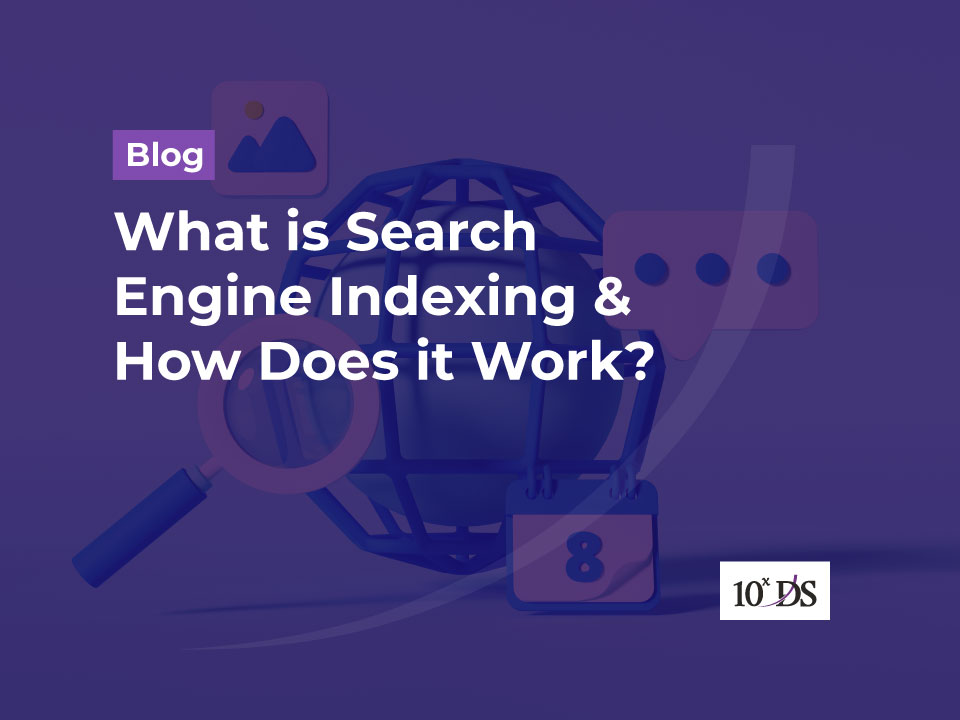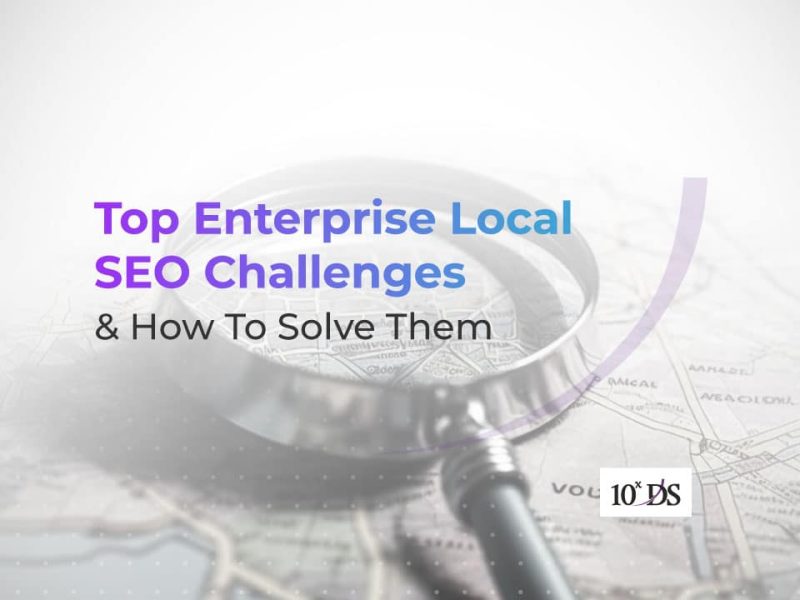
What is Search Engine Indexing & How Does it Work?
The process of understanding the content of web pages in order to return them as answers to user queries begins with the crawling and indexing of such pages.
Crawling and indexing techniques used by search engines are continually being refined. The process of optimising a website’s search engine visibility benefits from an in-depth familiarity with how major search engines like Google and Bing go about the business of scanning and indexing websites.
The Modern Process of Search Engine Indexing
Let’s break down how search engines actually work.
After a website has been crawled, it goes through a process called indexing, where its ranking is eventually determined. The term “indexing” is shorthand for the process of adding a page’s content to Google’s database so that it can be used in search engine results. New webpages on your site might be indexed in several ways. Actually, doing nothing can also increase the likelihood of a page being indexed. If your site is already indexed and the new content is linked to from within your site, Google’s crawlers will find it and add it to their index.
Let’s look at indexing in steps:
Any website that wants to compete for the top spot in search engine results pages (SERP) must first pass a selection process.
- In the first step, “web spiders” (also known as “bots”) investigate each of a site’s URLs. It’s a term for moving along on all fours.
- Second, during a process known as “indexing,” robots harvest information from websites and save it.
- Third, the website and its pages can now compete for a specific query’s ranking.
Methods for Quicker Indexing
But what if you want Googlebot to visit your site in record time?
This is useful if you have time-sensitive information or if you have recently made a significant modification to a page and want Google to index it.
When you have improved the click-through rate by optimising a crucial page or by changing the title and/or description, you can switch to a more time-efficient strategy. To properly gauge the progress, you need to know when exactly they were discovered and included in the SERPs.
For a search engine to become aware of your website or its updated pages, you must actively promote your site to the search engine. Popular and effective strategies include uploading a sitemap to Google, utilising external links, utilising social media, and employing specialised tools.
Here, you can resort to a few useful approaches.
1. Site Maps in XML
The earliest and most reliable method of drawing a search engine’s attention to specific material is through the use of XML sitemaps. An XML sitemap provides search engines with a comprehensive index of your site’s pages, together with meta information like creation and modification dates. Both Bing Webmaster Tools and Google Search Console allow users to upload a sitemap to the respective search engines.
2. Including references to other sites
In order for search engines to gauge the significance of a page, backlinks are crucial. They let Google know that the page is worth ranking well for its intended purpose.
The best strategy to get Google to index your material is to use backlinks. Agreed, GSC accepts sitemaps that include URLs. Especially if the site is very new and Google has no knowledge or signals about it, there is no downside to doing that. Sending a sitemap to the search engine is one technique to get noticed. However, there is no assurance that Google will notice that.
How to gain high-quality backlinks:
Guest posting – Publishing high-quality articles on other people’s blogs or websites and linking back to your own (e.g., Forbes, Entrepreneur, Business Insider, TechCrunch) is a great way to gain quality backlinks.
Publishing press releases can help spread the word about your firm and its products, as well as any upcoming events or noteworthy developments.
You can get a backlink by writing testimonials and submitting them to businesses in your field.
Social Media Linking – Leverage Facebook, Instagram, LinkedIn, and YouTube to have links to relevant pages on your website included in posts. Social media is a low-cost promotional strategy that can increase site visits, spread the word about your company, and enhance your search engine rankings. To add, we’ll cover social signals in the following section.
3. Enhancing social cues
Search engines aim to return relevant, high-quality results for users’ queries. Google’s algorithm considers social signals such as the number of times a post has been liked, shared, or viewed. All of these signals tell search engines that the information is useful, authoritative, and satisfying the demands of its target audience. The possibility that search engines will index your content will increase if users actively promote it by sharing, liking, and recommending it to others. That’s why maintaining an online presence is crucial.
You should keep in mind that Google has said that social signals are not a direct ranking factor. Even so, they can contribute to SEO in a roundabout way. Twitter’s inclusion in Google’s search engine results pages (SERP) as a result of the company’s collaboration with Google is another proof of the increasing weight of social media in search engine results.
All online actions that can be tracked through social media platforms are considered social signals. With Instagram’s Swipe Up function, you can send users directly to your website. Each relevant link can have its own Facebook post. The description field on YouTube is where you can insert a clickable link. You may improve your company’s and website’s trustworthiness by using LinkedIn. If you want your website to have the most possible impact, you need to understand the many platforms you’ll be catering to.
Keeping the following in mind is important:
- Keeping your social media platforms active with new posts every day shows your audience and search engines that your website and business are still alive.
- Followers are expecting content related to your business, industry, and brand, so give it to them!
- Generate information that people will want to share: infographics, memes, and study findings tend to do well on social media.
- Make the most of your social media profiles by including your website’s URL in the “Profile information” section of your profiles.
- As a general rule, the more interest there is in your website on social media, the sooner it will be indexed.
4. Request Indexing Using Google’s Webmaster Console
Using “Request Indexing” in Search Console, you can have your site indexed.
The first step is to change the default search of “Inspect and URL in domain.com” to something else. To have a specific URL indexed, type it in and press the Enter key.If Google has indexed the page, it will provide a wealth of details about it.
For our purposes, the relevant button (“Request Indexing” button) always shows up, regardless of whether or not the page has been indexed. This makes it useful for both content discovery and asking Google to pick up on a recent update. A Google search for the updated or new URL will reveal the results within seconds to minutes.
Find keywords your site could rank for right now and quality-vetted suggestions while spending less time on your study.
5. Take Part in Bing’s IndexNow
Bing uses a push mechanism to notify search engines whenever new or updated content is available over an open protocol. IndexNow is the name given to the new protocol for indexing web pages in search engines.
Push protocols are used to notify IndexNow-enabled search engines of newly published or updated content in the hopes that they would crawl the site and add the material to their index. The traditional XML Sitemap method is a pull protocol since it requires a search engine spider to visit and index it on its own (or to be fetched by Search Console).
IndexNow’s advantage is that it uses fewer web hosting and data centre resources, which is good for the planet and for your wallet. However, the most notable advantage is quicker content indexing. Only Bing and Yandex use IndexNow at the moment.
IndexNow is simple to set up:
- WordPress users can make use of the IndexNow plugin.
- Module for Drupal’s IndexNow.
- By default, Duda will use IndexNow.
- Cloudflare now supports IndexNow.
- An Akamai service works with IndexNow.
6. Bing’s Webmaster Tools
Bing Webmaster Tools is an option to think about in addition to IndexNow. It is important to sign up for a Bing Webmaster Tools account. The information provided is useful and extensive and will enhance your site’s usability, boost your search engine rankings (on Bing, Google, or any other platform), and ultimately benefit your users. Your material can be indexed quickly by selecting Configure My Site > Submit URLs.
Then, after typing in the URL or URLs you want indexed, you may submit your request.
An Indexing Application Programming Interface (API) for Bing Webmaster Tools can reduce the time it takes for material to appear in Bing’s search results from days to hours.
Crawl Budget
Crawl budget refers to the sum of time and energy Google plans to invest on indexing a certain website. The two primary elements that determine the allocated budget are the speed of your server and the number of users (i.e., how much can Google crawl without degrading your user experience).
There are Two Types of Crawling in Google’s Index
The process of Google indexing begins with a crawl, of which there are two varieties.
- Discovery crawling is the primary type, and it’s what Google uses to find new sites to add to its index.
- Google’s second type of crawling is called “Refresh,” and it looks for updated content on previously indexed pages.
Learn the Ins and Outs of Search Engines
In order to improve a website’s visibility in search results, first-rate content must be created, and then the site must be submitted to be indexed. Your webpage’s climb to the top of the search results (assuming everything works well!) begins the moment you get that material indexed, whether through an XML sitemap, Google Search Console URL Submission Tool, Bing Webmaster Tools, or IndexNow. To put it another way, knowing how search indexing functions is crucial.
Conclusion
While it’s crucial to have Google scan and index your site, please be patient as it can take some time before your pages start showing up in search engine results pages (SERPs). If you are well-versed in the intricacies of how search engines index websites, you can avoid making mistakes that will negatively affect your online presence.
Google won’t ignore your site if you follow their recommendations for sitemap setup and optimization, meet their technical search engine requirements, and provide them with high-quality, valuable content.
Talk to our experts at 10xDS Digital Agency about the online growth opportunities for your company and how you can take advantage of our comprehensive set of Digital Marketing services!

